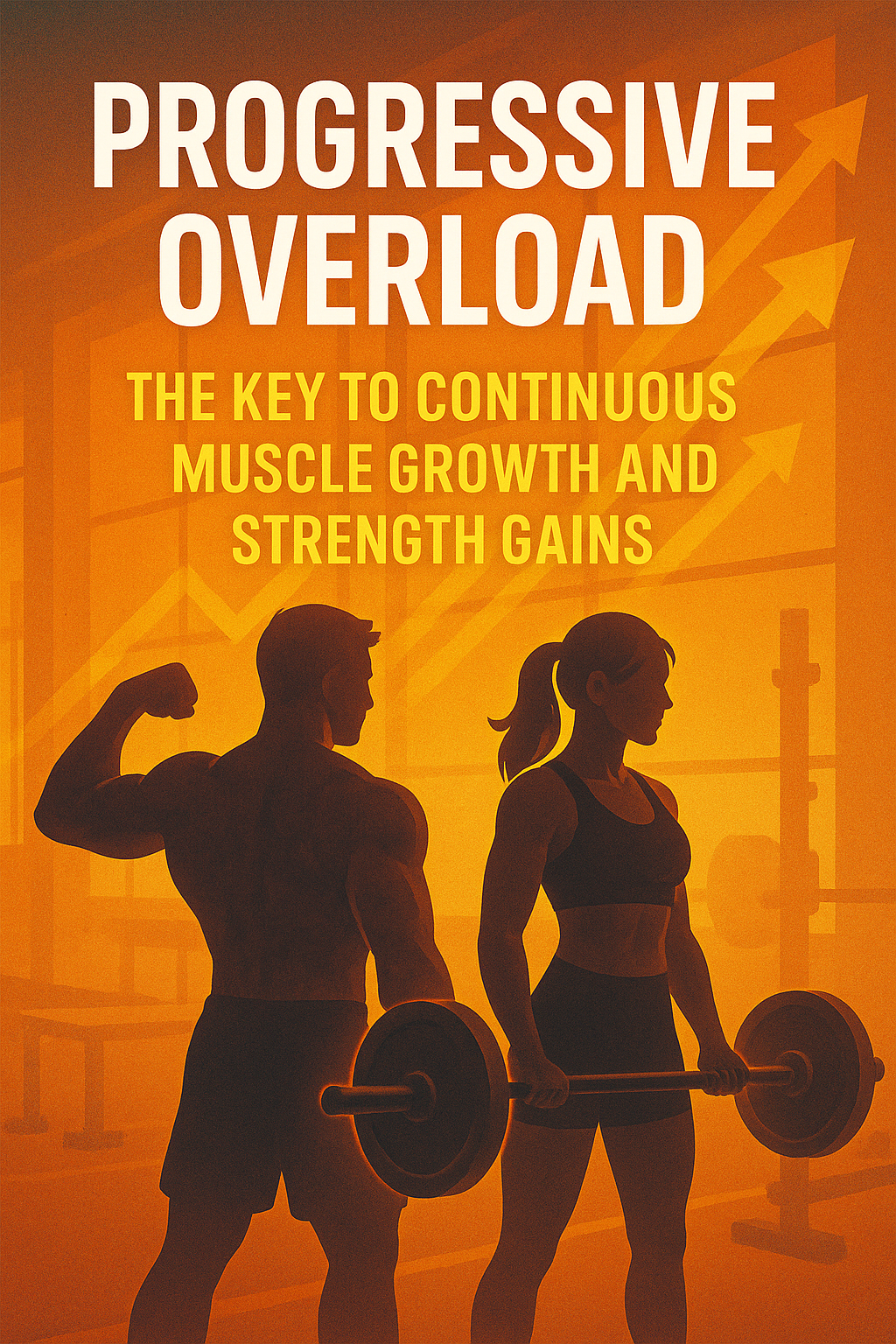When it comes to weightlifting and resistance training, one principle stands out as a crucial factor in achieving continuous muscle growth and strength gains: progressive overload. This concept involves gradually increasing the weight, resistance, or reps over time to challenge the muscles and promote adaptation. By incorporating progressive overload into your training routine, you can unlock a range of benefits, including increased muscle mass and strength, improved bone density, and enhanced muscle endurance.
Progressive overload is not just a technique; it’s a mindset. It requires a commitment to continuous challenge and progression, rather than simply going through the motions of a workout routine. By embracing progressive overload, you can break through plateaus, avoid stagnation, and achieve consistent gains in muscle mass and strength.
In this article, we’ll delve into the concept of progressive overload, exploring its benefits, types, and implementation strategies. We’ll also discuss common mistakes to avoid and provide a sample workout routine that incorporates progressive overload. Whether you’re a seasoned weightlifter or just starting out, this article will provide you with the knowledge and inspiration to take your training to the next level and achieve continuous muscle growth and strength gains.
What is Progressive Overload?
Progressive overload is a training principle that involves gradually increasing the intensity of your workouts over time to challenge your muscles and promote adaptation. This can be achieved through various methods, including:
1. Weight Increase
Gradually increasing the weight or resistance you’re lifting over time is a classic example of progressive overload. This can be done by adding weight to your barbell, dumbbells, or machine, or by increasing the resistance on your resistance band or cable machine.
2. Rep Range Increase
Increasing the number of reps you’re doing over time can also be a form of progressive overload. For example, if you’re doing 3 sets of 8-12 reps on the bench press, you can increase the rep range to 12-15 reps over time.
3. Set Increase
Adding more sets to your workout routine can also be a form of progressive overload. For example, if you’re doing 3 sets of 8-12 reps on the squat, you can increase the number of sets to 4-5 over time.
4. Rest Time Decrease
Decreasing the rest time between sets can also be a form of progressive overload. For example, if you’re resting for 60-90 seconds between sets, you can decrease the rest time to 30-60 seconds over time.
5. Frequency Increase
Increasing the frequency of your workouts can also be a form of progressive overload. For example, if you’re working out 3 times per week, you can increase the frequency to 4-5 times per week over time.
By incorporating one or more of these methods into your training routine, you can create a progressive overload that challenges your muscles and promotes adaptation.
Benefits of Progressive Overload
Incorporating progressive overload into your training routine can have a significant impact on your muscle growth, strength, and overall health. Some of the benefits of progressive overload include:
1. Increased Muscle Mass and Strength
Progressive overload is essential for building muscle mass and strength. By challenging your muscles with progressively heavier weights or resistance, you stimulate muscle growth and strength gains.
2. Improved Bone Density
Resistance training with progressive overload can also improve bone density, reducing the risk of osteoporosis and fractures.
3. Enhanced Muscle Endurance
Progressive overload can also improve muscle endurance, allowing you to perform daily tasks and activities with more energy and efficiency.
4. Better Joint Health
Progressive overload can help strengthen the muscles and connective tissues surrounding your joints, improving joint health and reducing the risk of injury.
5. Increased Caloric Burn and Metabolism
As you build muscle mass through progressive overload, your resting metabolic rate (RMR) increases, helping you burn more calories at rest and supporting weight loss.
6. Improved Mental Health and Confidence
Achieving progressive overload milestones can also boost your mental health and confidence, helping you feel more capable and empowered in your daily life.
7. Reduced Risk of Chronic Diseases
Regular resistance training with progressive overload can also reduce the risk of chronic diseases, such as heart disease, type 2 diabetes, and certain types of cancer.
By incorporating progressive overload into your training routine, you can experience these benefits and more, taking your fitness journey to the next level.
How to Implement Progressive Overload
Implementing progressive overload into your training routine requires a strategic approach. Here are some tips to help you get started:
1. Start with a Baseline Weight or Resistance
Begin by establishing a baseline weight or resistance that allows you to complete the desired number of reps with proper form.
2. Gradually Increase Weight or Resistance Over Time
Increase the weight or resistance by small increments (2.5-5lbs) over time, as you get stronger. This can be done every two to four weeks, depending on your progress.
3. Focus on Progressive Overload in Compound Exercises
Prioritize compound exercises like squats, deadlifts, bench press, and rows, which work multiple muscle groups at once. These exercises are most effective for building overall strength and muscle mass.
4. Incorporate Variations of Exercises to Avoid Plateaus
To avoid plateaus, incorporate variations of exercises that target the same muscle groups. For example, if you’re doing bench press, try incline dumbbell press or cable flyes to target the chest muscles from different angles.
5. Use a Training Log to Track Progress
Keep a training log to track your progress, including the weight or resistance used, number of reps, and sets completed. This will help you identify areas where you need to increase the intensity and make adjustments to your training routine.
6. Listen to Your Body and Recover Adequately
Remember to listen to your body and recover adequately between workouts. Adequate recovery is essential for muscle growth and repair.
7. Seek Professional Guidance
If you’re new to weightlifting or unsure about how to implement progressive overload, consider seeking guidance from a qualified personal trainer or coach. They can help you develop a customized training plan tailored to your needs and goals.
Common Mistakes to Avoid
When implementing progressive overload, it’s essential to avoid common mistakes that can hinder your progress or even lead to injury. Here are some mistakes to watch out for:
1. Increasing Weight Too Quickly
Avoid increasing the weight too quickly, as this can put excessive strain on your muscles and joints. Gradual progressions are safer and more effective.
2. Neglecting Proper Form and Technique
Never sacrifice proper form and technique for heavier weights. Poor form can lead to injury and undermine your progress.
3. Not Allowing Adequate Recovery Time
Insufficient recovery time can impede muscle growth and repair. Ensure you’re giving your muscles adequate time to recover between workouts.
4. Focusing Too Much on Isolation Exercises
While isolation exercises have their place, focusing too much on them can limit your progress. Prioritize compound exercises that work multiple muscle groups at once.
5. Ignoring Progressive Overload in Auxiliary Exercises
Don’t neglect progressive overload in auxiliary exercises like bicep curls or tricep extensions. These exercises can still benefit from progressive overload to ensure continued progress.
6. Not Adjusting Progressive Overload Based on Individual Needs
Be mindful of your individual needs and adjust your progressive overload strategy accordingly. For example, if you’re recovering from an injury, you may need to reduce the intensity of your progressive overload.
7. Lacking Patience and Consistency
Progressive overload is a long-term strategy that requires patience and consistency. Avoid getting discouraged by plateaus or setbacks, and stay committed to your training program.
Sample Workout Routine
Here’s a sample workout routine that incorporates progressive overload:
Day 1: Chest and Triceps
1. Bench Press: 3 sets of 8-12 reps, increasing weight by 2.5-5lbs every two weeks
2. Incline Dumbbell Press: 3 sets of 10-15 reps, increasing weight by 2.5-5lbs every two weeks
3. Tricep Pushdown: 3 sets of 12-15 reps, increasing weight by 2.5-5lbs every two weeks
4. Overhead Dumbbell Extension: 3 sets of 12-15 reps, increasing weight by 2.5-5lbs every two weeks
Day 2: Back and Biceps
1. Deadlift: 3 sets of 8-12 reps, increasing weight by 2.5-5lbs every two weeks
2. Bent-Over Barbell Rows: 3 sets of 8-12 reps, increasing weight by 2.5-5lbs every two weeks
3. Dumbbell Bicep Curls: 3 sets of 10-12 reps, increasing weight by 2.5-5lbs every two weeks
4. Hammer Curls: 3 sets of 10-12 reps, increasing weight by 2.5-5lbs every two weeks
Day 3: Legs
1. Squats: 3 sets of 8-12 reps, increasing weight by 2.5-5lbs every two weeks
2. Leg Press: 3 sets of 10-12 reps, increasing weight by 2.5-5lbs every two weeks
3. Lunges: 3 sets of 10-12 reps (per leg), increasing weight by 2.5-5lbs every two weeks
4. Leg Extensions: 3 sets of 12-15 reps, increasing weight by 2.5-5lbs every two weeks
Day 4: Shoulders and Abs
1. Shoulder Press: 3 sets of 8-12 reps, increasing weight by 2.5-5lbs every two weeks
2. Lateral Raises: 3 sets of 10-12 reps, increasing weight by 2.5-5lbs every two weeks
3. Rear Delt Fly: 3 sets of 12-15 reps, increasing weight by 2.5-5lbs every two weeks
4. Plank: 3 sets of 30-60 seconds, increasing duration by 15-30 seconds every two weeks
Remember to adjust the weights, reps, and sets based on your individual needs and progress. Also, make sure to warm up properly before each workout and rest for 60-90 seconds between sets.
Conclusion
Progressive overload is a powerful training principle that can help you achieve continuous muscle growth and strength gains. By gradually increasing the intensity of your workouts over time, you can challenge your muscles and promote adaptation.
Remember, progressive overload is not just about lifting heavier weights; it’s about challenging yourself and making progressive gains over time. It requires patience, consistency, and dedication, but the rewards are well worth it.
By incorporating progressive overload into your training routine, you can:
– Build muscle mass and strength
– Improve bone density and joint health
– Enhance muscle endurance and athletic performance
– Boost your metabolism and burn more calories at rest
– Improve your mental health and confidence
Don’t be afraid to challenge yourself and push your limits. With progressive overload, the only way to go is up. So, start implementing progressive overload into your training routine today and watch your body transform over time.
Remember to always prioritize proper form and technique, listen to your body, and recover adequately between workouts. With consistency and dedication, you can achieve your fitness goals and unlock your full potential.




